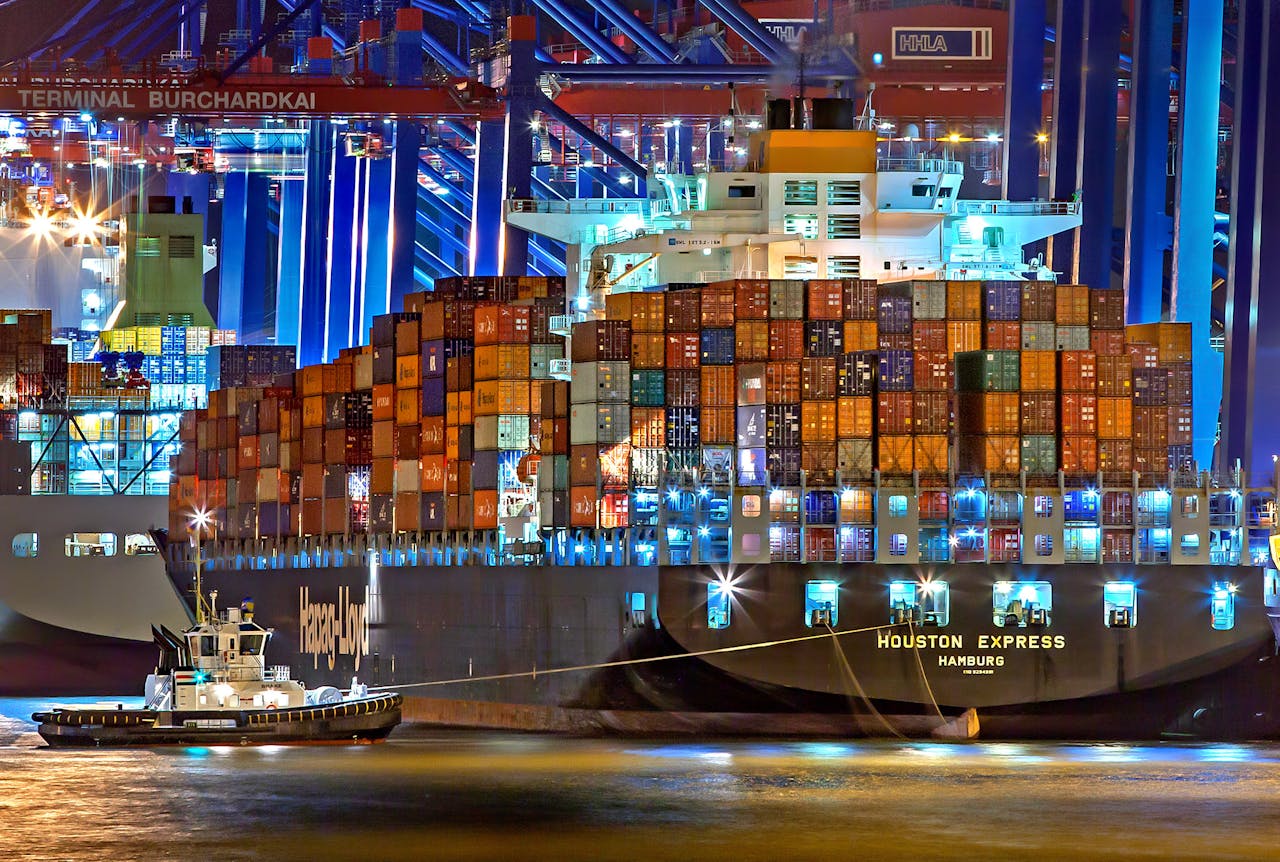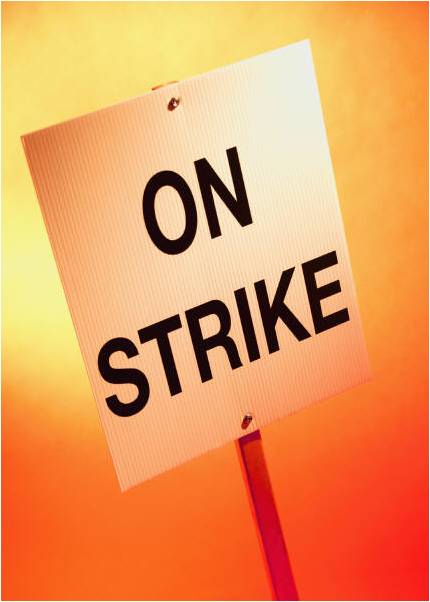ILA Strike Watch 2025: ILA’s October Strike to Affect Global Supply Chains thru Mid-November
Why is there an International Longshoremen’s Association (ILA) Strike Watch 2025? Because if a new master contract isn’t negotiated between now and January 15th, the ILA could be back on the picket lines instead of the docks. And there are major sticking points. Even the wage deal that got union members back to work is only a tentative agreement forced by pressure from the White House. The agreement is dependent upon reaching other deal points and likely creates even more contention between the United States Maritime Alliance (USMX) – representing employers at the port – and the ILA.

In the meantime, international shipping is feeling the effects of the ILA strike at the beginning of this month.
Supply chain disruptions at major international shipping hubs tend to ripple through global supply chains. Major disruptions cause waves. The International Longshoremen’s Association (ILA) strike, though it only last 3 days, shut down U.S. East and Gulf Coast ports. That’s plenty big enough for its effects to be felt around the world. And they are. Those adverse effects are expected to continue to be felt through mid-November. At least.
North-South Trade Lanes Affected by Strike
Just today, Laura Robb reported in a Journal of Commerce article about the North-South trade lane problems being seen at ports along the South American East Coast ports in the wake of the ILA strike:
Shippers on the North-South trade lane are facing disrupted shipping schedules and congestion at key ports along the East Coast of South America amid cascading effects from the early October strike at US East and Gulf coast ports that are just now being felt.
Market sources say cargo leaving ports in Brazil, Argentina and Uruguay is being delayed because ships bound for those ports are arriving from the US with disrupted schedules following the Oct. 1-3 strike by the International Longshoremen’s Association. The disruption in Brazil is being exacerbated by longshore labor strikes there.
Maersk, in an advisory on its website, said some South American terminals are seeing waiting times of as much as a week.
Maersk terminals in Santos, Itapoá and Rio Grande in Brazil; Bahia Blanca in Argentina and Montevideo in Uruguay were seeing delays of one to three days. Additionally, the Brasil Terminal Portuário in Santos and terminals in Paranagua were dealing with delays between four to seven days.
…
According to Lars Jensen, CEO of Vespucci Maritime and a Journal of Commerce analyst, South American ports should expected vessel delays about three to four weeks after the end of the ILA strike – a window that would begin this week.
…
Amid the congestion, rates for East Coast South American exports to the US Gulf Coast have continued to climb. As of Oct. 22, spot rates for cargo leaving East Coast South America northbound were assessed at $5,800 per FEU – more than 250% higher than October 2023, according to Platts, a sister company of the Journal of Commerce within S&P Global. Meanwhile, the Platts-assessed spot rate for US Gulf Coast exports to East Coast South America was called at $975 per FEU.
ILA Strike Effects Rippling thru Global Supply Chains

Going back to the end of last week, Robb was writing in the JOC about other trade lane ripple effects from the ILA strike:
The three-day strike by dockworkers at East and Gulf coast ports earlier this month will bring a delayed reduction in capacity on some trade lanes and could affect cargo frontloading ahead of another potential work stoppage in January, container shipping analyst Lars Jensen said Thursday.
Despite its brevity, shippers can expect to see ongoing impacts on tonnage supply on some trade lanes…
“A three-day strike doesn’t sound like much but that doesn’t mean it’s over,” Jensen said. “The regular cost from just a three-day strike is going to be with us at least until the middle of November. Some of the ripple effects are only just now beginning to show themselves.”
According to data from Vespucci Maritime presented by Jensen, the Asia to US East Coast trade lane will see an approximate 17% drop in capacity in week 46, which begins Nov. 11. If the strike had lasted a week, that drop would have been about 40%. For trans-Atlantic shipments from Northern Europe, capacity will drop by about 10% in week 42 – the current week – and recover slightly before dropping again by 15% in week 44, said Jensen.
Two weeks after the stoppage, ships on the trans-Atlantic backhaul trade are delayed for their arrivals to Europe, impacting export capacity, Jensen said. After three to four weeks, Latin America exports will be affected, with Asia exports impacted after five to six weeks, he said.
“These are simply dominoes that have fallen,” Jensen said. “Every time we have a problem somewhere in the world, this percolates through the system for months.”
…
“The strike and [the] slow steaming around the Cape of Good Hope requires such an investment in assets so you have enough containers to get back to handle both sides of the ocean,” Stuart Sandlin, president of Hapag Lloyd/North America said during the South Carolina conference. “These disruptions really throw a kink in that supply chain … That, for us as a carrier, is the worst scenario. Now, I have my ship, my $320 million asset, but there’s nothing to load because I don’t have the containers there.”
Rail Dwell Time Spikes on West Coast
On the other side of the country, rail dwell times spiked with the increase of cargo that has gone through West Coast ports, largely impacted by diverted cargo from the East Coast. This is especially so at the Ports of Los Angeles and Long Beach. Robb and Bill Mongelluzzo reported on that in yet another JOC article:
Rail container dwell times in the ports of Los Angeles and Long Beach surged to a two-year high in September as the largest US port complex handled record one-month volumes of imports from Asia, driven in part by retailers diverting cargo from East and Gulf coast ports ahead of the longshore strike there.
…
The record imports in September sent rail container dwell times in LA-LB soaring to an average of 9.25 days, up from 8.2 days in August and the highest dwells since 14.2 days in October 2022, according to the Pacific Merchant Shipping Association (PMSA), which represents terminal operators and shipping lines on the West Coast.
…
Forwarders say their containers are sitting at some LA-LB terminals for 10 days or longer before they can be retrieved.
Thankfully, long rail dwells at the West Coast ports have reportedly not caused ship congestion at them. However, rail delays can be costly for shippers. They also add to fears of container and equipment shortages for shipping.
Cargo volumes are starting to hit the point where they should be significantly reduced by the end of the peak season. However, the risk of another ILA strike happening on January 15th if a new master contract isn’t reached could cause another swelling of imports to West Coast ports from shippers diverting again from the East Coast. That has the potential to continue or restart dwell delays for West Coast rail. Because the ports survived this time without congestion at the terminals with ships getting held up at docks, I think it’s not too likely diversions would cause such congestion this time. Unless container availability becomes a major issue.
Of course, if a longer ILA strike hits on January 15th, all bets are off on the economic and supply chain damage it would do.
ILA Strike & Strike Watch Posts
ILA Already Threatening Strike
ILA Stance Is Worse Than Just Threatening Strike
We Have to Talk About the ILA Strike Threat
How to Prepare for Potential ILA Port Disruption
No One Knows What Will Happen with ILA Port Disruption
Early Peak Season, High Freight Rates, & 5 Factors Shaping Ocean Freight Shipping 2024
ILA Strike Watch 2024: Cancelled Talks & Strike Threat Increase
Are There Any Signs the Early Peak Season Is Slowing Down?
ILA Strike Watch 2024 – US Trade Groups Ask Biden to Get ILA to Negotiation Table
ILA Strike Watch 2024: Biden No, Trump Yes?
ILA Strike Watch 2024: ILA Says Strike More Likely
ILA Strike Watch 2024: Union Rejects Wage Offer & Prepares to Strike
ILA Strike Watch 2024: With 1 Month Till Strike, ILA Flips on Mediation
ILA Strike Watch 2024: ILA Announces Unanimous Support for Strike
ILA Strike Watch 2024: Will White House Stop Strike?
ILA Strike Watch 2024: Biden Won’t Stop Strike
Shipper Alert – ILA Strike Is On!
ILA Strike – Biden Plays Union Politics Instead of Protecting U.S. Economy
ILA Strike – Secretary of Labor’s Unbelievable Statement About Negotiations
Shipper Alert – ILA Strike Ends!
ILA Strike Aftermath – It’s Not Over Yet & Wage Agreement May Become Problem





